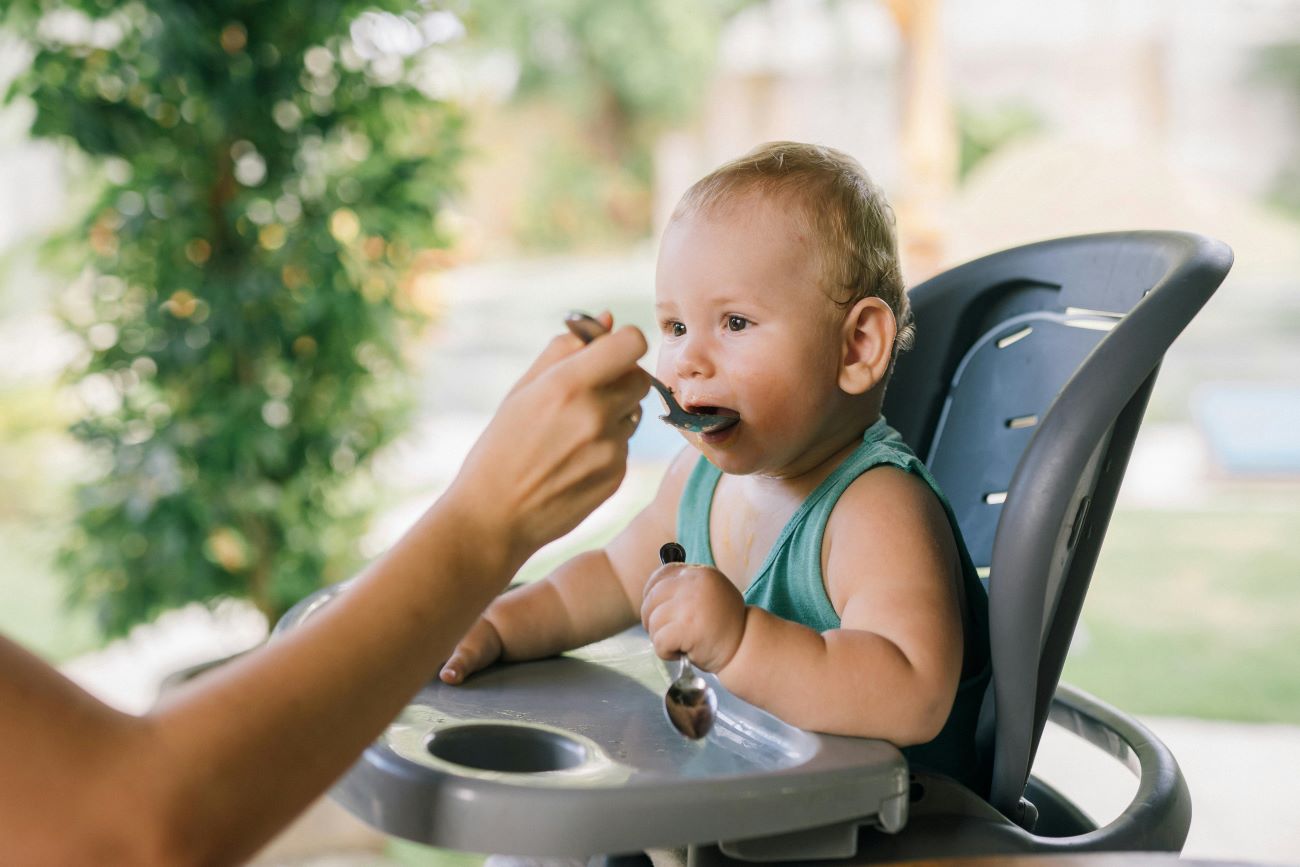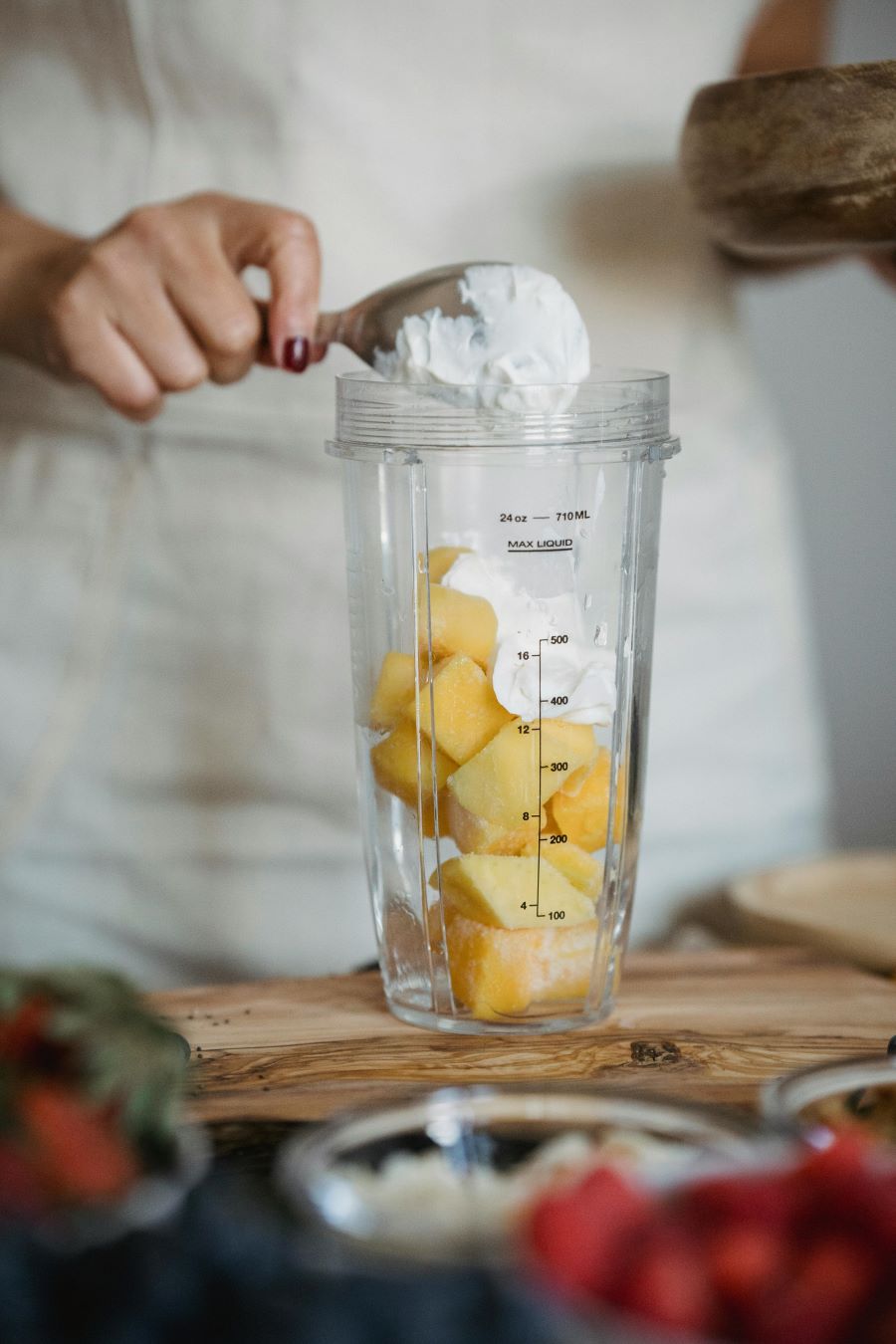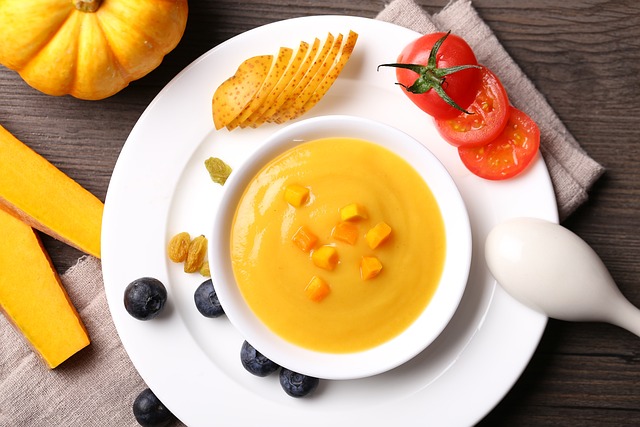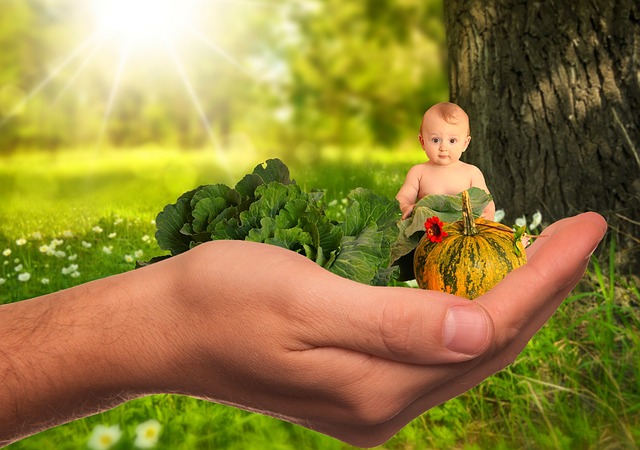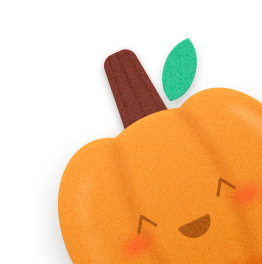Is puree the good first food for your baby? Unsure about the Advantages and Disadvantages of Puree Food for Baby? This research explores both sides of puree feeding and Baby-discourage to help you decide what’s best for your little one’s journey to solid foods!
Pureed food
Pureed food is food that has been mashed, blended, or reused to create a smooth and soft thickness. It’s like making food into a smooth paste, kind of like baby food.
Pureeing helps make food more accessible to swallow, especially for people who have trouble biting or eating regular food.
You can dissect nearly anything, like fruits, vegetables, flesh, or grains. Some common examples of pureed food include mashed potatoes, rubbish, or bound mists.
Pureed food is frequently used for babies who are just starting to eat solid foods, as well as for people who have difficulty eating due to medical conditions or age-related issues.
It’s a way to ensure that everyone can still enjoy nutritional and delicious refections, no matter their eating capacities.
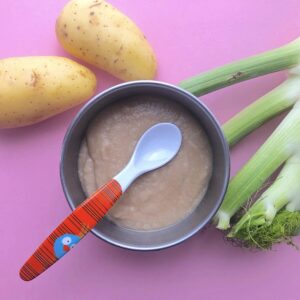
5 Advantages and Disadvantages of Puree Food for Baby
Advantages of Purees:
Nutrient Delivery
Purees are like super smooth foods that babies can easily swallow. They help babies get lots of good stuff from fruits, vegetables, and other foods because they are easy to absorb.
When babies are just starting to eat, purees are perfect because they do not have to work hard to eat them.
Dietary Control
With purees, you get to pick precisely the food that your baby eats. It can be beneficial if you are upset about disinclinations or want your baby to eat healthy stuff.
You can mix different fruits and veggies to make sure your baby gets a bunch of other foods.
Monkeyshine Reflex Management
Gagging occurs when babies make funny noises to prevent choking. It’s normal, especially when babies are learning to eat new foods.
But with purees, you can start with really smooth foods and sluggishly introduce new textures. It might help the baby’s monkeyshine less because the food is more accessible to swallow.
Ladle- Feeding and relating to Feeding
Your baby puree is a great way to bond with them. You get to be really close to each other, look into each other’s eyes, and have fun trying new foods together. It’s a particular time to connect with your baby and make recollections.
Convenience
Buying purees from the store is super easy for busy parents. They are formerly made, and some of them have redundant good stuff added in.
You can also make your purees at home and indurate them for later. That way, you can save time and still give your baby tasty, healthy food.
Disadvantages of Purees:
Limited Texture Exposure
Purees lack the variety of textures found in whole foods. It means babies may get used to smooth foods and might find it tricky to try foods with different textures later on.
As they grow, babies need to witness different textures, like soft and tickle, to help them learn how to bite correctly.
However, they might need help when it comes time to try cutlet foods or the same foods the rest of the family eats at the table if they only eat purees.
Reduced tone- Feeding Chops
When babies are ladle-fed purees, they miss out on the chance to touch and play with their food, which is an integral part of learning about it.
Exploring food with their hands helps babies develop hand-eye collaboration and learn how to feed themselves.
These chops are essential for after-development, including literacy to use implements and getting confident eaters. However, they might not know these chops as snappily if babies are constantly fed purees with a spoon.
Implicit nutritive
Loss-making purees frequently involve cuisine and blending, which can occasionally cause some of the important vitamins and minerals in food to break down.
Blended food is always an excellent way to ensure that babies get all the vitamins and minerals they need, but using fresh foods can give a lesser variety of nutrients.
Threat of Missing Out on Natural Sweeteners
Whole fruits contain fiber, which is essential for digestion and helps babies feel full for longer. But when fruits are turned into purees, they frequently lose some of their fiber content.
Some commercially set purees have added sugars, which can be unhealthy for babies.
It’s essential to check the constituents of baby food markers and choose options that are as close to natural as possible to make sure babies are getting stylish nutrition.

Beyond Purees: Exploring Baby-Led Weaning
Another way to start babies on solid foods is called Baby-Led Weaning (BLW). With BLW, babies get to explore and feed themselves with small pieces of age-applicable whole foods right from the launch, along with their regular milk.
It means babies can hold onto the food and put it in their mouths by themselves. Some people worry about babies choking when they try BLW because they are feeding themselves.
But sympathizers of BLW say that babies have a strong kickback called the monkeyshine kickback, which helps protect them from choking.
They believe that babies snappily learn how to handle different textures of food without choking.
BLW can also help babies learn how to feed themselves and get used to different tastes and textures beforehand on.
Plus, some parents suppose that BLW might help prevent their child from being picky eaters later on. So, BLW is another way for babies to start eating solid foods besides purees.
The Choice is yours: Finding the Right Balance.
Introducing solid foods to your baby is an instigative corner, but it can also feel inviting with so numerous options and opinions out there.
Still, there is no need to stress because there is no single” right” way to do it. Some parents choose to offer purees, while others conclude for baby-led weaning (BLW), where babies explore cutlet foods on their own.
Still, numerous parents find a balance between the two approaches, offering purees for some reflections and allowing their baby to explore cutlet foods at others.
Choosing What Works Stylish for You and Your Baby
It is essential to choose a method that you both feel comfortable with. Still, you can consider this if your child is showing signs of readiness to eat solids, such as sitting with backing and showing an interest in eating. You should always consult your croaker or other healthcare professionals if you have any doubts.
Purees: Benefits and Uses
Baby purees are an excellent option for those who have just started solid food. They are smooth, easy to eat, and nutrient-rich, a gentle way to give essential nutrients to a developing baby.
Baby-Led weaning: Its advantages
The baby-led work allows babies to discover different textures and tastes of food at their own pace. This method encourages independence, collaboration between the hands and eyes, and tone-feeding skills. Babies learn how to regulate their quantum eating pace, which promotes healthy eating habits and reduces gluttony.
Chance a balance
Many parents have found that combining purees with BLW is the best option for their child and family. Purees are a great option for some meals because they’re familiar, easy to eat, and convenient.
Cutlets, on the other hand, encourage independence and tone regulation by letting babies explore them. The key is to find the balance between your needs and those of your child. Trust your instincts, and take this trip to introduce solid foods together.
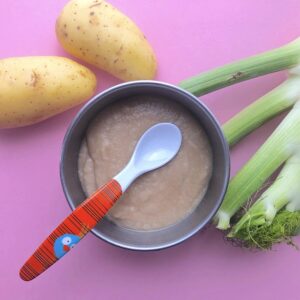
Here are some additional tips for starting solids, regardless of the method you choose:
Talk to your Doctor
It’s vital to consult your doctor before you start feeding solids to your child. They know your baby’s health style and can give you advice acclimatized to your needs.
However, your pediatrician is the best person to ask if you have any worries or questions about starting solids.
Start sluggishly
When you are ready to introduce solid foods to your baby, take it slow. Begin with just one new food at a time.
Give your baby many days to try each new food before introducing another bone. This will help you watch for any signs of disinclinations or responses to the new foods.
Pay attention to cues
Your baby will give you suggestions about when they are packed and when they have had enough to eat. Watch for signs like turning their head down from the spoon, pushing food down, or closing their mouth. Do not press your baby to eat further than they want. Let them guide you in how much they need to eat.
Make it delightful!
You and your child should enjoy the mealtime experience. Talking and smiling to your child can make meals more enjoyable.
Make silly faces and sounds or make funny ones to entertain them while they are eating. Make time fun for your child to develop a healthy relationship with food.
Conclusion
In conclusion, whether you are considering purees or exploring baby-led weaning, the decision eventually rests on what works best for you and your baby. Both styles have their advantages and disadvantages, but the key is choosing a balance that suits your family’s requirements and preferences.
With tolerance, inflexibility, and a focus on creating cheerful mealtime guests, you can confidently navigate your baby’s trip to solid foods and lay the foundation for a continuance of healthy eating habits.

FAQS
- What age should I start feeding my baby solids?
Babies are generally ready to start trying solid foods around six months old. Still, every baby is different, so it’s essential to look for signs of readiness, like sitting up with support and showing interest in food.
- Can I mix purees and baby-led weaning?
Yes, numerous parents find success in combining the rudiments of both styles. You can offer purees for some reflections while allowing your baby to explore croquette foods at other times.
The key is to find a balance that works for you and your baby, ensuring they get the nutrients they need while also fostering independence and disquisition.


